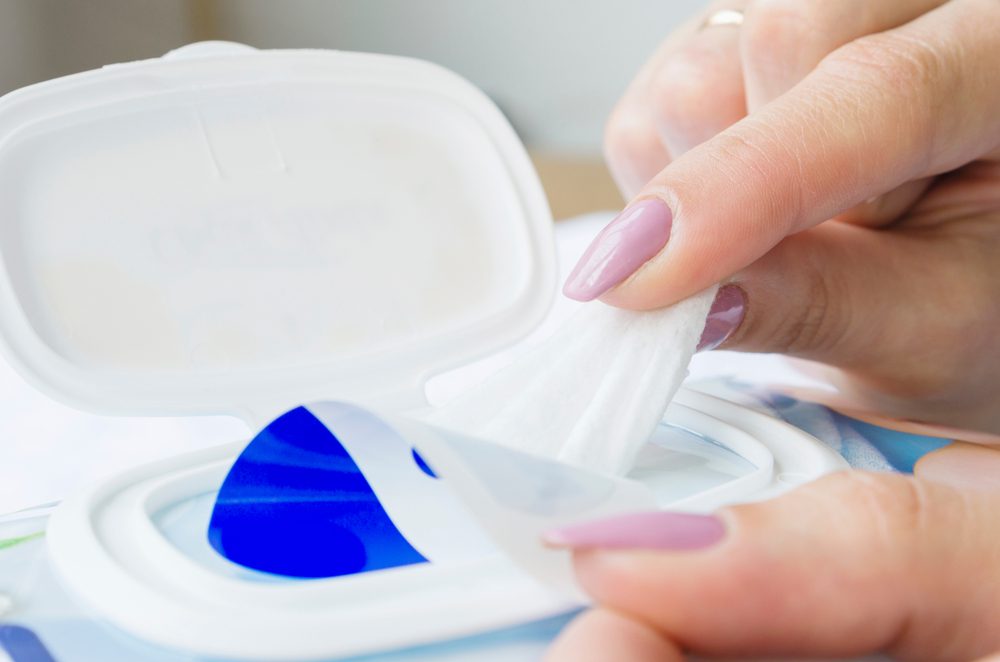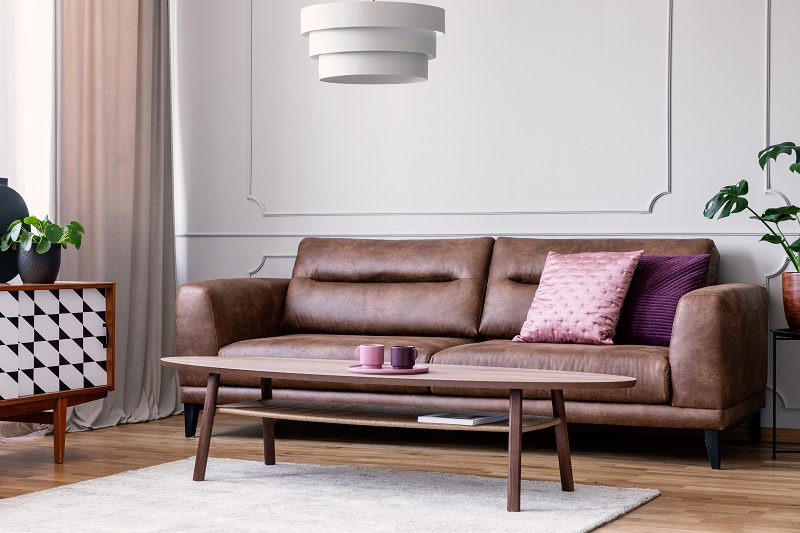
Antibacterial wipes are a time-crunched cleaner’s best friend, especially now when everyone’s extra careful with cleaning and disinfecting their homes, but there are 10 things you should never use them on.
As people around the world become vastly more attentive to cleaning, everyone is buying antibacterial wipes as fast as retailers can keep them stocked, considering that they’re very hard to find these days, alongside other cleaning products. People are now using antibacterial wipes to wipe down everything, in hopes that it’ll make their homes a little cleaner, safer and germ-free. And, of course, the best thing about antibacterial wipes is that they’re certainly easy to use. While it’s a great cleaning tool, there are lots of potentially surprising things that you shouldn’t use them to clean.
Children’s toys
When you wipe a surface with an antibacterial wipe, you can see a gratifying smudge of dirt on the white material. However, what you don’t see is what’s left behind, for instance, chemicals.
“The major reason that I believe that people should not use antibacterial wipes as an everyday go-to wipe is that we are seeing an increase in antibiotic-resistant bacteria,” says John Manolas, co-owner of Whyte Gate and chemist. “Some of the blame for this phenomenon goes to antibacterial soaps and wipes. Most surfaces will probably be equally germ-free after regular cleaning with soap and water or other household cleaners,” he says. Manolas also explains that parents shouldn’t use the wipes on children’s toys because kids are likely to put the toys in their mouths.
What he recommends using instead: Vinegar and water. Add half a cup of vinegar to a gallon of water and wipe down the toys with the solution. If the toy is waterproof, you can soak it in the vinegar solution for at least 15 minutes to make sure it kills any existing bacteria. Rinse it thoroughly and let it air-dry. This is a great non-toxic way to clean your children’s toys.
However, if the toys still smell like vinegar once they’re dry, you need to rinse them out again.

Anything that absorbs moisture
To be effective, any antibacterial solution needs to sit for several minutes in order to kill bacteria. Additionally, when it comes to a soft surface like foam or carpet, for example, it’s impossible to remain wet long enough to be truly effective. If you have to use multiple wipes to achieve the result you wanted and kill the bacteria, the moisture could truly damage the surface.
If you want to know how long your surfaces must be wet to be sterilized, look at the bottle, says Jason Courtney, owner of the Office Pride in downtown Pensacola. “Every kind of wipe has a ‘kill claim’ on the back, which indicates what it will kill in a certain amount of time. In a lab, wipes are tested for everything from hepatitis B to influenza to staphylococcus,” he says. “If the wipe kills the germ, it can be listed on the container. How long the surface must remain wet to kill the germ is spelled out on the container, too.”
What he recommends using instead: Hydrogen peroxide. There are many ways in which you can clean your carpet without damaging it. Of course, it’s important to vacuum your carpet first, and if you know it has specific stains, hydrogen peroxide is a good catch-all. For this solution, combine a teaspoon of 3 percent hydrogen peroxide (a higher concentration might bleach your carpets) with a little cream of tartar or a dab of non-gel toothpaste. Additionally, always do a spot test first.
Kitchen counters
If you think a swipe of an antibacterial wipe on a kitchen counter that just had raw chicken is enough to keep your family safe and your kitchen clean, think again. “Kitchen counters are hot spots for germs and bacteria, and cleaning them using only antibacterial wipes isn’t nearly enough,” says Lily Cameron, cleaning and organizing professional and supervisor at Fantastic Services.
What she recommends using: Instead, Cameron says, when you need to disinfect your counters, use hot water, soap, and a sponge. Also, it’s important to properly clean, or frequently replace your sponge, considering that it is one of the germiest items in your kitchen.

Bathroom countertops and fixtures
Your bathroom is usually filled with bacteria, so a quick swipe with an antibacterial wipe is never enough to keep bacteria growth at bay. “To kill bacteria effectively, a disinfectant needs to stay on the surface for about five to ten minutes,” Cameron says. “Cleaning with antibacterial wipes leaves the surface dry less than five minutes for sure. Overusing of such wipes may expose your family to harmful chemicals without the germ-destroying benefit.”
What to use instead: Comet Disinfecting Bathroom Cleaner. This cleaning product professional house cleaners swear by is some stronger stuff that’ll power through soap scum, hard water, and whatever else your bathroom can throw at it. At the same time, it is gentle and won’t harm your surfaces!
Hardwood surfaces
The chemicals and other strong ingredients in antibacterial wipes can damage some of your home’s surfaces over time, including hardwoods, which might lose their shine after repeated scrubs.
They can also be damaged by moisture. “Wood surfaces need to dry quickly, but wipes leave the surfaces relatively wet,” says Alberto Navarrete, the General Manager of Frisco Maids in Dallas, “so that is counterproductive.”
Greg Shepard founder of Dallas Maids home cleaning, also in Dallas, says: “With wood, less is more. Wood floors, furniture, and wood trimming should not be cleaned often with products because with frequent cleanings the finish dulls over time. This goes double with bacterial wipes because they contain alcohol, which damages wood’s finish.”
What he recommends using instead: Pine-Sol. Pine-sol will safely clean wood surfaces and leave them shining, plus, it’s got a disinfectant component that’ll keep things germ-free.

Wiping down the whole kitchen
I know it is tempting to take out a wipe from the canister and quickly use it to clean your stove, your fridge, the microwave, and the sink, however, it would be better not to do that.
Wonder why? Antibacterial wipes are not meant for cleaning large areas. In fact, you may make a bacteria problem worse if you use them for multiple spaces. “Never use one antibacterial wipe to clean more than one surface,” Cameron says. “A dirty wipe has germs remaining on it and can transport bacteria to another location.”
What she recommends using instead: Try using one wipe per surface, and then toss it. It might seem like you’re wasting antibacterial wipes when you really want to conserve them, especially now when they’re in short supply. However, using the same wipe for your entire kitchen is a cleaning mistake that actually make your home dirtier.
Surfaces with a sealant
The chemicals and acids in antibacterial wipes can damage the polish of sealed surfaces, like marble and granite, making the surfaces look dull, and scratched.
What to use instead: You should look for specially-designed sealers for these surfaces, or opt for using plain soap and water, which is highly effective as a multi-purpose cleaner.

Leather
Many disinfectant or antibacterial wipes contain alcohol, and alcohol can dehydrate supple leather. Additionally, used several times, it may leave your leather goods looking dry and chalky.
What you should use instead: You’ll want to use a gentle cleaner on leather, like baby soap, and put a few drops into a quart or so of water. When you’re finished cleaning, go over the leather again with a clean, damps sponge to remove any soapy residue.
If you still want to use antibacterial wipes, make sure they do not contain alcohol.
Lacquered furniture
You can damage the beautiful finish of lacquered chairs and desks by using these alcohol-containing wipes, making it look dull. The same thing applies to any woodwork in your home, such as staircase railings or chair molding, which may have a high-sheen lacquer finish.
What to use instead: Use gentle soap and warm water. Put one teaspoon of soap into a half-gallon of water and use a damp cloth.
Your hands
If the disinfectant works perfectly on doorknobs and kitchen surfaces, it doesn’t mean it is good for your hands. “Never clean your hands with antibacterial wipes before or while eating, because the wipes leave a residue on the skin. Plus, not all the microbes and bacteria will wipe away,” Cameron says. “The alcohol may irritate the skin, too.”
What to use instead: There’s nothing better and more efficient than actually thoroughly washing your hands! “Stop the spread of germs by washing your hands with soap and warm water,” says Cameron.
You also need to make sure you don’t mistake antibacterial wipes designed for your hands with the disinfecting antibacterial wipes for homes and offices, according to Brian Sansoni, vice president of communications for the American Cleaning Institute. “Hand wipes are a convenient way to keep your hands clean when you are away from soap and water,” he says.























